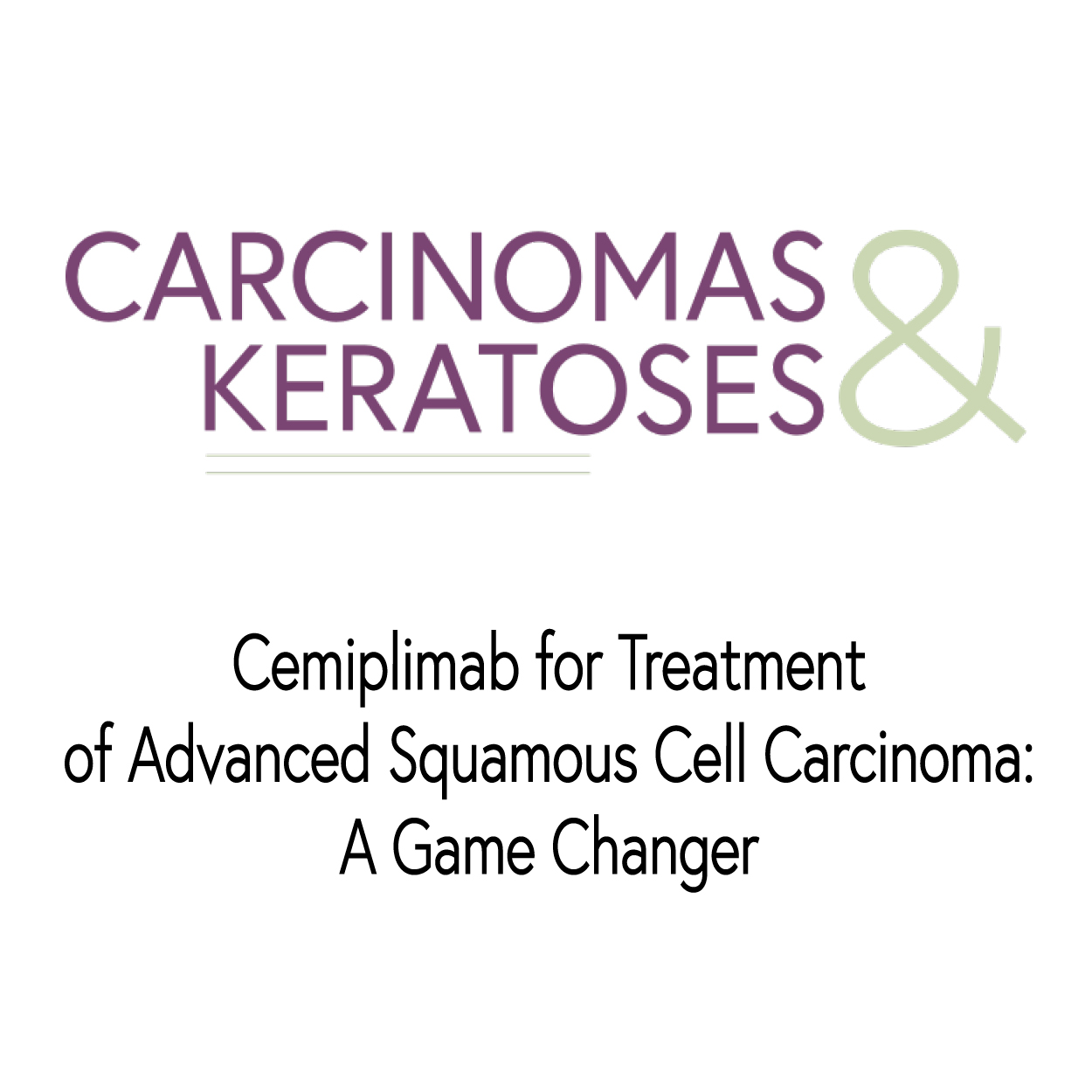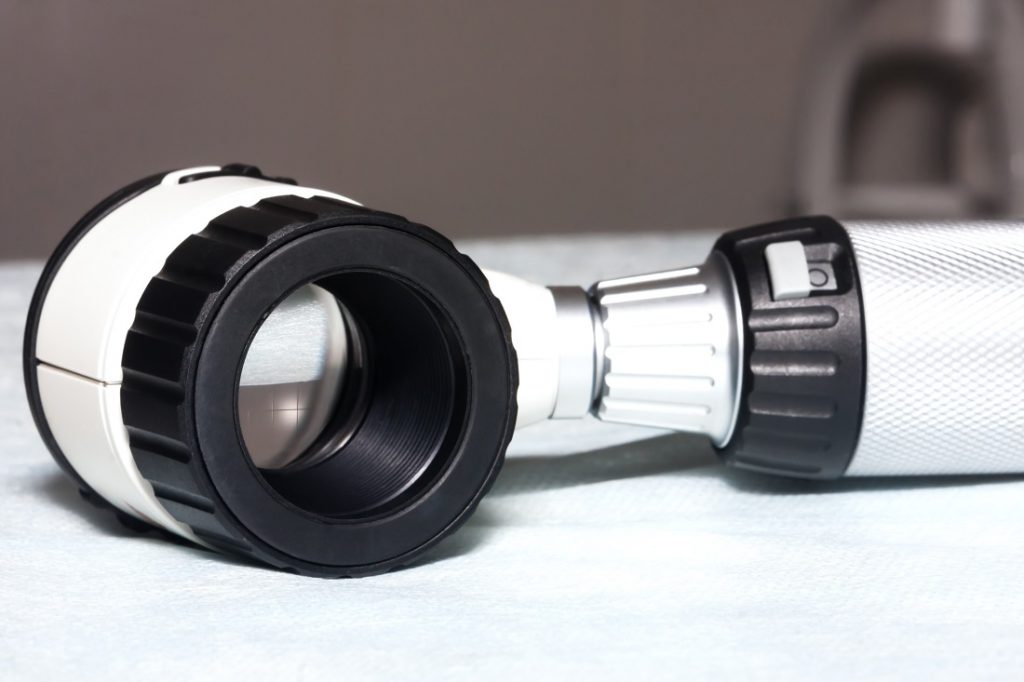Advanced Squamous Cell Carcinoma Treatment
New Options. New Hope.
About 95 percent of squamous cell carcinomas (SCCs) of the skin are detected early, when they are easiest to treat and cure. The remaining 5 percent of SCC cases have advanced to such an extent that they are far more dangerous and challenging to treat.
Fortunately, the field of immunotherapy is growing, giving patients with advanced SCC a new option for treating and managing the disease.
The disease is also known as advanced cutaneous squamous cell carcinoma (cSCC). Adding the word “cutaneous” identifies it as a skin cancer and differentiates it from squamous cell carcinomas that can arise in other areas inside the body such as the mucous membranes in the mouth, throat, lungs or genital regions.
What is advanced SCC?
When a squamous cell carcinoma of the skin has spread extensively or aggressively, or has resisted multiple treatments and repeatedly recurred, it is considered to be advanced.
These tumors include:
- Locally advanced SCC: Tumors that are large or have penetrated deep into underlying tissues, muscles or nerves. These SCCs can be disfiguring and/or can compromise these underlying structures.
- Metastatic SCC: Tumors that have spread beyond the original location to other parts of the body. These SCCs can be life-threatening.
If you’ve been diagnosed with advanced SCC, your doctor may recommend an evaluation by a multidisciplinary team to explore treatment options. The team may include your dermatologist and/or Mohs surgeon, along with physicians and surgeons from other specialties. In fact, there are new tools, including genomic testing, that are helping dermatologists make more informed decisions to improve health outcomes and the patient experience. After surgery to remove the tumor and, if necessary due to metastasis, local lymph nodes, options may include a combination of treatments, based on the complexity of the disease and your overall health. The regimen can include:
Excisional surgery
How it works
Using a scalpel, the surgeon removes the entire tumor along with a “safety margin” of surrounding normal tissue. The margin of normal skin removed depends on the thickness and location of the tumor.
Typically, the patient goes home after the surgery, and the excised tumor goes to the lab. If the lab subsequently finds cancer cells beyond the margins, the patient may need to return for more surgery until margins are cancer-free. If the cancer is advanced, other complementary (adjuvant) therapies are often recommended.
When it’s used
For small, early SCCs that have not spread, excisional surgery is frequently the only treatment required. For advanced SCCs, the physician will most likely recommend additional treatments following removal of the tumor.
Mohs surgery
How it works
Mohs surgery is usually performed during a single visit, in several stages. The surgeon removes a layer of tissue at the tumor site and examines the skin cells under a microscope in an on-site lab, while the patient waits. If cancer cells remain at any of the margins, the surgeon removes another layer of tissue from the precise area where the SCC cells were found. The doctor repeats this process until no cancer cells remain.
When it’s used
Mohs surgery is the most effective technique for removing early SCCs and is also used for SCC tumors that have recurred, are large or growing rapidly or have indistinct edges. It is often recommended for SCCs located in small, cosmetically or functionally important areas around the eyes, nose, lips, ears, scalp, fingers, toes or genitals. Mohs is also used for SCCs that have recurred, and for tumors that are large or growing rapidly, as well as ones with indistinct edges. Get more details about Mohs surgery here.
Radiation therapy
How it works
The physician uses low-energy X-ray beams to destroy the tumor, with no need for cutting or anesthesia. Destruction of the tumor may require several treatments over a few weeks or daily treatment for a specified time.
When it’s used
Radiation therapy is primarily used for SCCs that are hard to treat surgically, and in elderly patients or people in poor health for whom surgery is not advised. For some cases of advanced SCC, radiation may be used after surgery, or in combination with other treatments. It can be used to reduce tumor size so that immunotherapies can work more effectively, and it may offer systemic, immunotherapeutic benefits itself.
Immunotherapy
Treatment overview
In September 2018, after successful clinical trials, the immunotherapy, cemiplimab-rwlc (Libtayo®), became the first medication of any kind to be approved by the U.S. Food and Drug Administration (FDA) for treating patients with certain forms of advanced cutaneous squamous cell carcinoma.
In June 2020, pembrolizumab (Keytruda®) was approved by the FDA for the treatment of recurrent or metastatic SCC that is not curable by radiation or surgery. In July 2021, the FDA expanded this approval to include SCC that is locally advanced and not curable by radiation or surgery.
How it works
Cemiplimab and pembrolizumab are both checkpoint blockade therapies, a type of immunotherapy that works by harnessing the power of the immune system to battle cancer.
Under normal conditions, the immune system uses checkpoints, which are molecules that suppress production of T cells, the white blood cells that help protect the body from infection. These checkpoints keep T cells from overproducing and attacking normal cells in the body. However, cancer cells have the ability to keep those checkpoints active, suppressing the immune system so the cancer can grow and thrive. Both cemiplimab and pembrolizumab block a particular checkpoint called PD-1 from working, so the immune system can release massive amounts of T cells to attack and kill cancer cells.
Find out more about cemiplimab and pembrolizumab.
When it’s used
Cemiplimab is used to treat patients with SCC that has spread beyond the primary tumor site, and patients with locally advanced, inoperable SCC who are not candidates for surgery or radiation. Similarly, pembrolizumab is used to treat patients with recurrent, metastatic or locally advanced SCC who are not candidates for surgery or radiation.
Never ignore a suspicious growth!
Sometimes SCCs become advanced because a patient does not seek medical care for a suspicious growth, or decides against surgical removal. Neglecting any new or changing lesion on your skin can prove dangerous. When in doubt, get it checked out.
Reviewed by:
Elizabeth K. Hale, MD,
C. William Hanke, MD
Note: The information included on this website is medically reviewed and factually accurate. It is intended for educational purposes only. The treatment information on this page is not a recommendation or endorsement of any drug, device or treatment, nor does it suggest that any drug, device or treatment is safe or effective for you. If you have any questions about skin cancer treatments, please talk to your health care provider.






